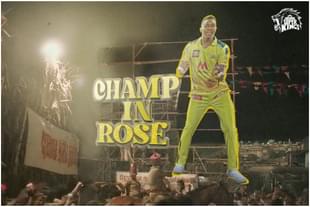Business
The Economics Of IPL Franchises
Sourav Datta
Oct 27, 2021, 06:05 PM | Updated 06:04 PM IST
Save & read from anywhere!
Bookmark stories for easy access on any device or the Swarajya app.


The Indian Premier League (IPL) has grown into the most prominent sports league in India. Started in 2008 by fugitive businessman Lalit Modi, the league is now run by the Board for Control of Cricket in India (BCCI).
The numbers clearly indicate that the league has been quite successful. Mukesh Ambani-owned Indiawin Sports Limited had paid around Rs 450 crore for the Mumbai Indians team in 2008 — the highest amount paid for a franchise back then.
The recent auctions for the Lucknow and Ahmedabad franchises yielded Rs 7,090 crore and Rs 5,625 crore respectively. Both the cities have a population that is a fraction of Mumbai’s total.
Using the Rs 7,090 crore valuation as a rough benchmark, the Mumbai franchise’s value is likely to have grown at a compounded annual growth rate of more than 23 per cent over the last 13 years. In contrast, the BSE Sensex has grown at 14 per cent per annum during the same period.
Quite evidently, the IPL franchises are highly valued assets.
What makes a Franchise Valuable?
Like any asset, the IPL’s franchises’ valuation depends upon the future cash flows it can generate. An IPL franchise generates revenues through four major sources: grant of central rights, sponsorships, ticket sales, and prize money.
Grant of Central Rights
The BCCI sells media and digital rights for the IPL to broadcasters. These broadcasters in turn sell ad-space to brands that wish to grab viewer eyeballs.
IPL ad-spaces command huge prices — around Rs 15-18 lakh for every 10 seconds. Broadcasters also sign up commercial partners to secure some revenue upfront. The growing popularity of the IPL means that broadcasters are ready to pour in more money to buy the rights.
During the 10-year period of 2008-2017, Sony owned the broadcast rights to IPL that it had bought for Rs 911 crore per year.
But when the deal with Sony expired, Star Network paid Rs 3,270 crore for the next five years of broadcasting rights — a whopping Rs 16,350 crore.
The money obtained through the sale of these rights is then distributed between the franchises and the BCCI. Earlier franchises were entitled to a larger part of the media rights money, but with time, the franchises’ share has come down.
Currently, BCCI keeps 50 per cent of the money while franchises distribute the remaining 50 per cent among themselves. Around 45 per cent of the money is distributed equally, while the remaining five per cent is distributed on the basis of the team’s performance in the season.
As the number of teams increase, the number of matches would increase. Consequently, broadcasters would be ready to shell out more for the advertisements.
The BCCI and the teams are expecting the 2023 broadcasting rights auctions to fetch larger amounts of money.
Sponsorships
Sponsorships include title sponsors, jersey sponsors, and other deals carved out with various brands. BCCI has even managed to rope in sponsors for time-outs, and umpires.
The fees brought in by official partners are distributed among the franchisees equally. But individual teams often partner with individual sponsors. These partners pay up money to appear on the jersey, or to use intellectual properties of the franchise. Some of these deals allow brands to use player images and team logos in advertisements and products.
Ticket Sales & Prize Money
Tickets sales are a relatively smaller component of earnings that have vanished because of the pandemic. Some popular teams witness high stadium occupancy, resulting in higher ticket revenues.
However, IPL franchises must make expenditures and investments to generate these revenues. The two major cost centres for a franchise are player remuneration and franchisee fees. The remaining costs are usually minor, pertaining to running the operation efficiently.
Player Remuneration
All IPL franchises pay for players during the player auctions. For older teams, player remuneration happens to be one of the largest cost centres — eating up almost 40 per cent of the franchise’s revenues.
Having the right players boost the franchise’s brand value, while allowing the team to perform better. Most teams do not have dedicated fan bases because Indian fans are not dedicated to a particular franchise, but rather follow a certain player.
In contrast, football usually sees a strong following for clubs irrespective of the players. Therefore, having famous players on the team can aid the franchise in obtaining more supporters individual sponsorships.
Franchisee Fees
All franchisees must pay 20 per cent of the total revenue (including rights revenue, sponsorships and miscellaneous) to the BCCI each year as a fee. The fee is used to organise matches, pay associations, and for other organisational uses. New franchises must also pay the auction prices in instalments over the next 10 years, over and above the franchisee fee.
Therefore, CVC capital which won the bidding for Ahmedabad franchise will be paying Rs 562 crore each year for the next five years. Similarly, the RPSG Group that bagged the Lucknow franchise would pay around Rs 709 crore each year for a decade.
Since a part of their revenue is already secured through media rights deals, the actual outgo is likely to be relatively lower. And if these franchises can build a strong base of sponsors and other revenue sources rapidly, they might even turn profitable before the decade ends.
Private-equity companies like CVC Capital are solely focused on generating returns for their investors, rather than visibility or glamour.
For the reasons mentioned above, IPL teams have a relatively weaker fan base when compared to football clubs. Hence, these teams have been unable to sustainably generate profits continually.
However, as the media and digital space becomes highly competitive, team owners are expected revenues from media right sales to increase again in the 2023 auctions.





